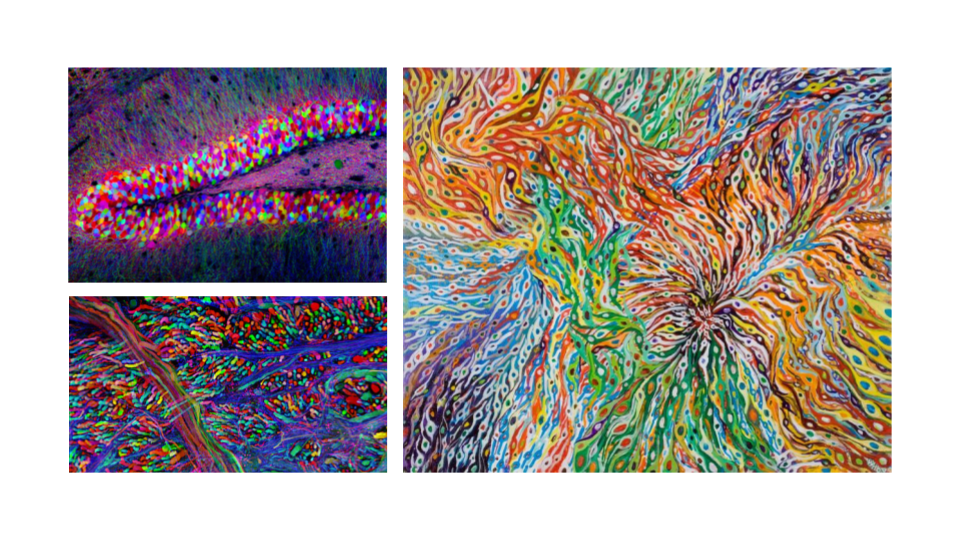
Saved by Anne-Laure Le Cunff
Somewhere over the brainbow

Saved by Anne-Laure Le Cunff
Those beautiful color-dappled images are actually representations of particular areas in the brain that are working the hardest—as measured by increased oxygen consumption—when a subject performs a task such as reading a passage or reacting to stimuli, such as pictures of faces.
Nicolay Gerold added
Marvin Minsky, co-founder of the Artificial Intelligence Laboratory at MIT, thinks of the brain as a society—a society of subassemblies cooperating to learn about the world.251 The image can easily be reversed. A society is a brain, a learning device that works according to the principles that drive a neural net.
A neuron is really good at one thing: summing up the stimulation coming into its dendrites to “decide” whether to fire a pulse along its axon. A neuron by itself isn’t very smart. But if you put neurons together in the right way you get a brain; you get an emergent system that is much smarter and more flexible than a single neuron.
Juan Orbea added
Keely Adler added
Juan Orbea added
These observations refute the myth that consciousness simply arises from neurons doing their thing. Here are billions of cerebellar cells doing what comes naturally to them, firing action potentials and releasing little squirts of neurotransmitter, yet without any feelings. What matters is not the constitution of brain tissue but the way it is wire
... See more